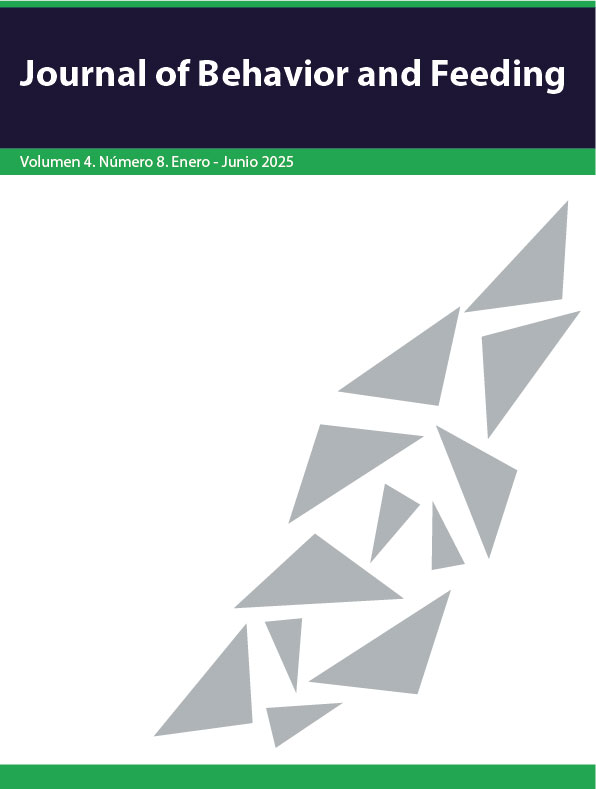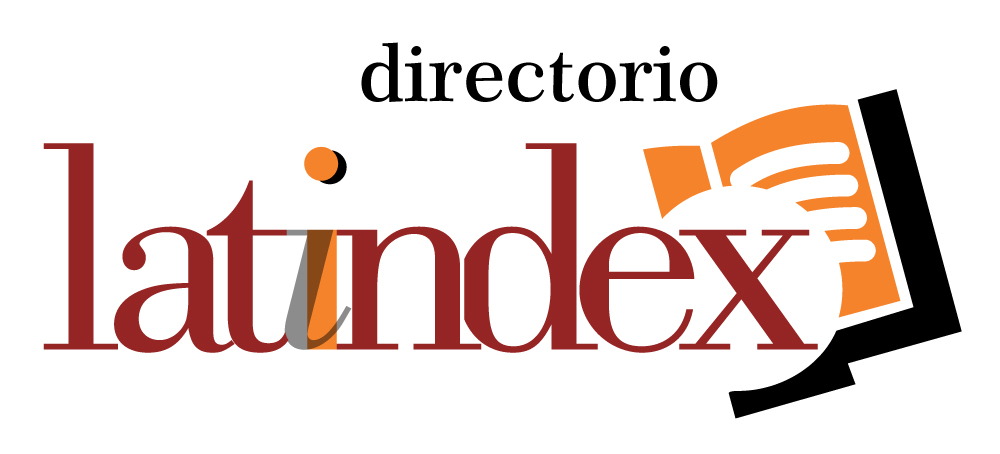Integration of the context in nutritional interventions: Reflections and different approaches
DOI:
https://doi.org/10.32870/jbf.v4i8.65Keywords:
context, intervention, eating behavior, nutritionAbstract
Nutritional interventions are intended to improve the health and well-being of individuals; however, given the latent increase in chronic-degenerative diseases and the low effectiveness of these interventions, it is essential to reflect on the elements that are being considered in these interventions. Context integration involves considering a wide range of factors that influence people's eating practices and dietary choices, this multidimensional approach seeks to understand and address individual and community circumstances that affect nutrition and health. This article addresses approaches to the integration of context in nutritional interventions with the aim of providing a perspective that allows understanding and recognizing the influence of biological, psychological, social, cultural, economic and environmental factors on nutrition and thereby obtaining tools that allow improving the designs of nutritional interventions that consider not only nutritional needs, but also the individual and community circumstances of people.
Downloads
References
Adafer, R., Messaadi, W., Meddahi, M., Patey, A., Haderbache, A., Bayen, S., y Messaadi, N. (2020). Food timing, circadian rhythm and chrononutrition: A systematic review of time-restricted eating’s effects on human health. Nutrients, 12(12), 3770. https://doi.org/10.3390/nu12123770
Alcantara, I. C., Tapia, A. P. M., Aponte, Y., y Krashes, M. J. (2022). Acts of appetite: Neural circuits governing the appetitive, consummatory, and terminating phases of feeding. Nature Metabolism, 4(7), 836-847. https://doi.org/10.1038/s42255-022-00611-y
Ali, M. Z., Carlile, G., y Giasuddin, M. (2020). Impact of global climate change on livestock health: Bangladesh perspective. Open Veterinary Journal, 10(2), 178-188. https://doi.org/10.4314/ovj.v10i2.7
Bishehsari, F., Voigt, R. M., y Keshavarzian, A. (2020). Circadian rhythms and the gut microbiota: from the metabolic syndrome to cancer. Nature Reviews. Endocrinology, 16(12), 731–739. https://doi.org/10.1038/s41574-020-00427-4
Boutelle, K. N., Manzano, M. A., y Eichen, D. M. (2020). Appetitive traits as targets for weight loss: The role of food cue responsiveness and satiety responsiveness. Physiology & Behavior, 224, 113018. https://doi.org/10.1016/j.physbeh.2020.113018
Brobeck, J. R. (1948). Food intake as a mechanism of temperature regulation. The Yale Journal of Biology and Medicine, 20(6), 545-552.
Bronfenbrenner, U. (1986). Ecology of the family as a context for human development: research perspectives. Developmental Psychology, 22(6), 723–742. https://doi.org/10.1037/0012-1649.22.6.723
Cao, M., Xu, T., y Yin, D. (2023). Understanding light pollution: Recent advances on its health threats and regulations. Journal of Environmental Sciences, 127, 589-602. https://doi.org/10.1016/j.jes.2022.06.020
Carnell, S., Benson, L., Pryor, K., y Driggin, E. (2013). Appetitive traits from infancy to adolescence: Using behavioral and neural measures to investigate obesity risk. Physiology & Behavior, 121, 79-88. https://doi.org/10.1016/j.physbeh.2013.02.015
Chamorro, R., Farias, R., y Peirano, P. (2018). Regulación circadiana, patrón horario de alimentación y sueño: Enfoque en el problema de obesidad. Revista Chilena de Nutrición, 45(3), 285-292. https://doi.org/10.4067/s0717-75182018000400285
Chouraqui, J.-P., Turck, D., Briend, A., Darmaun, D., Bocquet, A., Feillet, F., Frelut, M.-L., Girardet, J.-P., Guimber, D., Hankard, R., Lapillonne, A., Peretti, N., Roze, J.-C., Siméoni, U., Dupont, C., y the Committee on Nutrition of the French Society of Pediatrics. (2021). Religious dietary rules and their potential nutritional and health consequences. International Journal of Epidemiology, 50(1), 12-26. https://doi.org/10.1093/ije/dyaa182
Contento, I. R. (2008). Nutrition education: Linking research, theory, and practice. Asia Pacific Journal of Clinical Nutrition, 17 (Suppl 1), 176-179.
Contento, I. R. (2009). Evaluando la efectividad de la educación nutricional. https://www.fao.org/ag/humannutrition/30497-0a4e500285ce056f28a16239bebb460ac.pdf
Cupertino, M. D. C., Guimarães, B. T., Pimenta, J. F. G., Almeida, L. V. L. D., Santana, L. N., Ribeiro, T. A., y Santana, Y. N. (2023). Light pollution: A systematic review about the impacts of artificial light on human health. Biological Rhythm Research, 54(3), 263-275. https://doi.org/10.1080/09291016.2022.2151763
Darbre, P. D. (2017). Endocrine disruptors and obesity. Current Obesity Reports, 6(1), 18-27. https://doi.org/10.1007/s13679-017-0240-4
Espinoza Gallardo, A. C., Martinez-Vázquez, Y. V., Zepeda-Salvador, A. P., Martínez-Moreno, A. G., y Vázquez-Cisneros, L. C. (2023). Uso de pantalla y duración de sueño en estudiantes universitarios. Journal of Behavior and Feeding, 3(5), 22-29. https://doi.org/10.32870/jbf.v3i5.37
Feraco, A., Armani, A., Amoah, I., Guseva, E., Camajani, E., Gorini, S., Strollo, R., Padua, E., Caprio, M., y Lombardo, M. (2024). Assessing gender differences in food preferences and physical activity: A population-based survey. Frontiers in Nutrition, 11, 1348456. https://doi.org/10.3389/fnut.2024.1348456
Franzago, M., Alessandrelli, E., Notarangelo, S., Stuppia, L., y Vitacolonna, E. (2023). Chrono-Nutrition: circadian rhythm and personalized nutrition. International Journal of Molecular Sciences, 24(3), 2571. https://doi.org/10.3390/ijms24032571
Friedman, J. M. (2019). Leptin and the endocrine control of energy balance. Nature Metabolism, 1(8), 754-764. https://doi.org/10.1038/s42255-019-0095-y
Galindo-Villalvazo, R. E., Gallardo, A. C. E., Bernal-Gómez, S. J., Martínez-Vázquez, Y. V., Martínez-Moreno, A. G., y Zepeda-Salvador, A. P. (2023). Comparación del riesgo de TCA en estudiantes antes y durante el confinamiento por COVID-19. Journal of Behavior and Feeding, 3(5), 30-37. https://doi.org/10.32870/jbf.v3i5.38
Gomaa, E. Z. (2020). Human gut microbiota/microbiome in health and diseases: A review. Antonie Van Leeuwenhoek, 113(12), 2019-2040. https://doi.org/10.1007/s10482-020-01474-7
Gupta, C. C., Coates, A. M., Dorrian, J., y Banks, S. (2019). The factors influencing the eating behaviour of shiftworkers: What, when, where and why. Industrial Health, 57(4), 419-453. https://doi.org/10.2486/indhealth.2018-0147
Hemmer, A., Mareschal, J., Dibner, C., Pralong, J. A., Dorribo, V., Perrig, S., Genton, L., Pichard, C., y Collet, T.-H. (2021). The effects of shift work on cardio-metabolic diseases and eating patterns. Nutrients, 13(11), 4178. https://doi.org/10.3390/nu13114178
Henderson, S. E. M., Brady, E. M., y Robertson, N. (2019). Associations between social jetlag and mental health in young people: A systematic review. Chronobiology International, 36(10), 1316-1333. https://doi.org/10.1080/07420528.2019.1636813
Henríquez-Beltrán, M., Jeria, C., Cruces-Andrews, E., y Belmonte, T. (2024). Circadian rest-activity pattern and cardiometabolic illnesses. Revista Médica Clínica Las Condes, 35(3–4), 290–298. https://doi.org/10.1016/j.rmclc.2024.04.002
Hunot, C., Fildes, A., Croker, H., Llewellyn, C. H., Wardle, J., y Beeken, R. J. (2016). Appetitive traits and relationships with BMI in adults: Development of the Adult Eating Behaviour Questionnaire. Appetite, 105, 356-363. https://doi.org/10.1016/j.appet.2016.05.024
Kabir, A., Miah, S., y Islam, A. (2018). Factors influencing eating behavior and dietary intake among resident students in a public university in Bangladesh: A qualitative study. PLOS ONE, 13(6), e0198801. https://doi.org/10.1371/journal.pone.0198801
Kirk, D., Catal, C., y Tekinerdogan, B. (2021). Precision nutrition: A systematic literature review. Computers in Biology and Medicine, 133, 104365. https://doi.org/10.1016/j.compbiomed.2021.104365
Koopman, A. D. M., Rauh, S. P., Van ‘T Riet, E., Groeneveld, L., Van Der Heijden, A. A., Elders, P. J., Dekker, J. M., Nijpels, G., Beulens, J. W., y Rutters, F. (2017). The association between social jetlag, the metabolic syndrome, and type 2 diabetes mellitus in the general population: The New Hoorn Study. Journal of Biological Rhythms, 32(4), 359-368. https://doi.org/10.1177/0748730417713572
Kyba, C. C. M., Kuester, T., Sánchez De Miguel, A., Baugh, K., Jechow, A., Hölker, F., Bennie, J., Elvidge, C. D., Gaston, K. J., y Guanter, L. (2017). Artificially lit surface of Earth at night increasing in radiance and extent. Science Advances, 3(11), e1701528. https://doi.org/10.1126/sciadv.1701528
Lacko, A. M., Maselko, J., Popkin, B., y Ng, S. W. (2021). Socio-economic and racial/ethnic disparities in the nutritional quality of packaged food purchases in the USA, 2008–2018. Public Health Nutrition, 24(17), 5730-5742. https://doi.org/10.1017/S1368980021000367
López-Espinoza, A., Martínez, M. A. G., Aguilera, C. V. G., Aranda, R. M. P., López, L. B., DeMaría-Pesce, V., Zepeda-Salvador, A. P., & López-Uriarte, P. J. (2016). Educación en nutrición y alimentación ¿por qué y para qué?. En A. López-Espinoza, y A. G. M. Martínez (Eds.). La Educación en Alimentación y Nutrición (1er ed., pp. 1-8). McGraw-Hill
López-Espinoza, A., Martínez-Moreno, A., Aguilera-Cervantes, V., Salazar-Estrada, J., Navarro-meza, M., Reyes-Castillo, Z., García-Sánchez, N., y Jiménez-Briseño, A. (2018). Estudio e investigación del comportamiento alimentario: Raíces, desarrollo y retos. Revista Mexicana de Trastornos Alimentario, 9(1), 107-118. doi.org/10.22201/fesi.20071523e.2018.1.465
López-Sobaler, A. M., Cuadrado-Soto, E., Peral Suárez, Á., Aparicio, A., y Ortega, R. M. (2018). Importancia del desayuno en la mejora nutricional y sanitaria de la población. Nutrición Hospitalaria, 35(6). https://doi.org/10.20960/nh.2278
Menezes, M. C. D., Diez Roux, A. V., Costa, B. V. D. L., y Lopes, A. C. S. (2018). Individual and food environmental factors: Association with diet. Public Health Nutrition, 21(15), 2782-2792. https://doi.org/10.1017/S1368980018001623
Milliron, B.-J., Woolf, K., y Appelhans, B. M. (2012). A point-of-purchase intervention featuring in-person supermarket education affects healthful food purchases. Journal of Nutrition Education and Behavior, 44(3), 225-232. https://doi.org/10.1016/j.jneb.2011.05.016
Mora, A. (2022). Evaluación de la efectividad de una estrategia educativa, que incluyó la exposición repetida de alimentos por medio de la culinaria y la comunicación de conocimientos, en el consumo de verduras por escolares de Ciudad Guzmán [Tesis doctoral, Universidad de Guadalajara].
Monterrosa, E. C., Frongillo, E. A., Drewnowski, A., De Pee, S., y Vandevijvere, S. (2020). Sociocultural influences on food choices and implications for sustainable healthy diets. Food and Nutrition Bulletin, 41(2_suppl), 59S-73S. https://doi.org/10.1177/0379572120975874
Mota, M. C., Silva, C. M., Balieiro, L. C. T., Gonçalves, B. F., Fahmy, W. M., y Crispim, C. A. (2019). Association between social jetlag food consumption and meal times in patients with obesity-related chronic diseases. PLOS ONE, 14(2), e0212126. https://doi.org/10.1371/journal.pone.0212126
Münch, M., y Bromundt, V. (2012). Light and chronobiology: Implications for health and disease. Dialogues in Clinical Neuroscience, 14(4), 448-453. https://doi.org/10.31887/DCNS.2012.14.4/mmuench
Nelson, R. J., y Chbeir, S. (2018). Dark matters: Effects of light at night on metabolism. Proceedings of the Nutrition Society, 77(3), 223-229. https://doi.org/10.1017/S0029665118000198
Patel, P. C. (2019). Light pollution and insufficient sleep: Evidence from the United States. American Journal of Human Biology, 31(6), e23300. https://doi.org/10.1002/ajhb.23300
Popkin, B. M., y Reardon, T. (2018). Obesity and the food system transformation in Latin America. Obesity Reviews, 19(8), 1028-1064. https://doi.org/10.1111/obr.12694
Reutrakul, S., y Knutson, K. L. (2015). Consequences of circadian disruption on cardiometabolic health. Sleep Medicine Clinics, 10(4), 455–468. https://doi.org/10.1016/j.jsmc.2015.07.005
Shaw, E., Dorrian, J., Coates, A. M., Leung, G. K. W., Davis, R., Rosbotham, E., Warnock, R., Huggins, C. E., y Bonham, M. P. (2019). Temporal pattern of eating in night shift workers. Chronobiology International, 36(12), 1613-1625. https://doi.org/10.1080/07420528.2019.1660358
Shriver, L. H., Dollar, J. M., Calkins, S. D., Keane, S. P., Shanahan, L., y Wideman, L. (2020). Emotional eating in adolescence: effects of emotion regulation, weight status and negative body image. Nutrients, 13(1), 79. https://doi.org/10.3390/nu13010079
Suwannapaporn, P., Chaiyabutr, N., Wanasuntronwong, A., y Thammacharoen, S. (2022). Arcuate proopiomelanocortin is part of a novel neural connection for short-term low-degree of high ambient temperature effects on food intake. Physiology & Behavior, 245, 113687. https://doi.org/10.1016/j.physbeh.2021.113687
Taillie, L. S., Afeiche, M. C., Eldridge, A. L., y Popkin, B. M. (2015). Increased snacking and eating occasions are associated with higher energy intake among Mexican children aged 2-13 years. The Journal of Nutrition, 145(11), 2570–2577. https://doi.org/10.3945/jn.115.213165
Taillie, L. S., Grummon, A. H., y Miles, D. R. (2018). Nutritional Profile of Purchases by Store Type: Disparities by Income and Food Program Participation. American Journal of Preventive Medicine, 55(2), 167-177. https://doi.org/10.1016/j.amepre.2018.04.024
Valdés, S., Maldonado-Araque, C., García-Torres, F., Goday, A., Bosch-Comas, A., Bordiú, E., Calle-Pascual, A., Carmena, R., Casamitjana, R., Castaño, L., Castell, C., Catalá, M., Delgado, E., Franch, J., Gaztambide, S., Girbés, J., Gomis, R., Gutiérrez, G., López-Alba, A., … Rojo-Martínez, G. (2014). Ambient temperature and prevalence of obesity in the Spanish population: The Di@bet.es study: Ambient Temperature and Obesity. Obesity, 22(11), 2328-2332. https://doi.org/10.1002/oby.20866
Van Strien, T. (2018). Causes of emotional eating and matched treatment of obesity. Current Diabetes Reports, 18(6), 35. https://doi.org/10.1007/s11892-018-1000-x
Voruganti, V. S. (2023). Precision nutrition: Recent advances in obesity. Physiology, 38(1), 0. https://doi.org/10.1152/physiol.00014.2022
Wahl, S., Engelhardt, M., Schaupp, P., Lappe, C., y Ivanov, I. V. (2019). The inner clock—Blue light sets the human rhythm. Journal of Biophotonics, 12(12), e201900102. https://doi.org/10.1002/jbio.201900102
Westbury, S., Ghosh, I., Jones, H. M., Mensah, D., Samuel, F., Irache, A., Azhar, N., Al-Khudairy, L., Iqbal, R., y Oyebode, O. (2021). The influence of the urban food environment on diet, nutrition and health outcomes in low-income and middle-income countries: A systematic review. BMJ Global Health, 6(10), e006358. https://doi.org/10.1136/bmjgh-2021-006358
Wyse, C. A., Selman, C., Page, M. M., Coogan, A. N., y Hazlerigg, D. G. (2011). Circadian desynchrony and metabolic dysfunction; did light pollution make us fat? Medical Hypotheses, 77(6), 1139-1144. https://doi.org/10.1016/j.mehy.2011.09.023
Zerón-Rugerio, M. F., Cambras, T., y Izquierdo-Pulido, M. (2019). Social jet lag associates negatively with the adherence to the Mediterranean diet and Body Mass Index among young adults. Nutrients, 11(8), 1756. https://doi.org/10.3390/nu11081756
Zerón-Rugerio, M. F., Hernáez, Á., Cambras, T., y Izquierdo-Pulido, M. (2022). Emotional eating and cognitive restraint mediate the association between sleep quality and BMI in young adults. Appetite, 170, 105899. https://doi.org/10.1016/j.appet.2021.105899
Published
How to Cite
Issue
Section
License
Copyright (c) 2025 Authors

This work is licensed under a Creative Commons Attribution 4.0 International License.
This is an open-access article distributed under the terms of the Creative Commons Attribution License (CC BY). The use, distribution or reproduction is permitted, provided the original author(s) and the copyright owner(s) are credited and that the original publication in this journal is cited, in accordance with accepted academic practice. No use, distribution or reproduction is permitted which does not comply with these terms.







